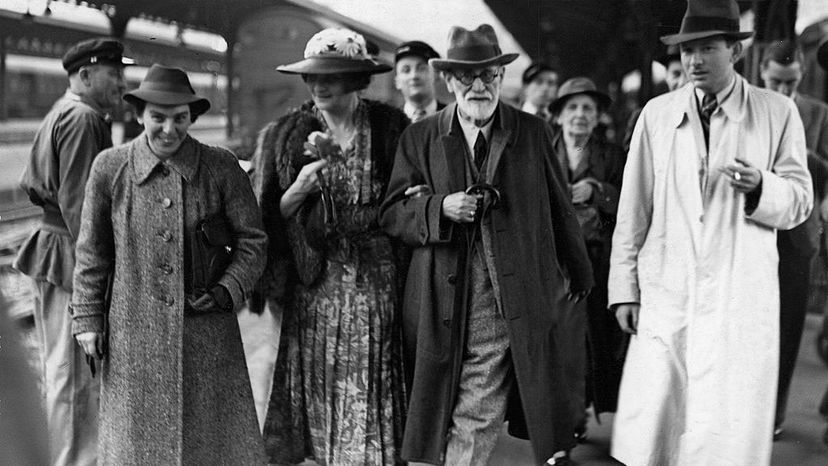The Rest of Freud's Life

Around 1900, Freud published "The Interpretation of Dreams." Considered his greatest book, it delves into why we dream and what our dreams mean within our psychological lives. The book marked the beginning of the public's awareness of the unconscious mind. Although Freud did not come up with concept of the unconscious mind, he determined it could be accessed via talk therapy, rather than only through hypnosis. This became the basis of psychoanalysis, which we'll explore on the next page.
In 1902, he was appointed a professor of neuropathy at the University of Vienna, a post he held for more than 35 years. He gave lectures on his theories and started to gain a group of followers, founding the International Psychoanalytic Association in 1910, along with Swiss psychiatrist and psychoanalyst Carl Jung. (Jung later broke with Freud after disagreeing with some of his views). In 1923, Freud published "The Ego and the Id," his study of the human psyche, which claimed that most (if not all) psychological conditions stemmed from conflict between the id, the ego and the superego.
Advertisement
When the Nazis began their rise to power, one of their earliest acts was to publicly burn books by Jewish authors, including Freud. The Nazis also disliked psychoanalysis.
In 1938, Germany annexed Austria, and the Gestapo briefly arrested the Freuds' daughter, Anna. That same year, Princess Marie Bonaparte — one of Freud's patients — paid a large sum of money to the Nazis to secure exit visas for Freud and his family. Finally allowed to leave Austria, they fled to London [source: Latson].
A year later, Freud died of jaw cancer. A heavy cigarette and cigar smoker, he had been diagnosed with cancer in 1923 and had had more than 30 operations to treat it. His physician, Max Schur, gave him three large doses of morphine near the end of his life to ease his pain. Some claim Schur's act was really physician-assisted suicide; Freud slipped into a coma after receiving the morphine and never awoke [sources: BBC, Klein].